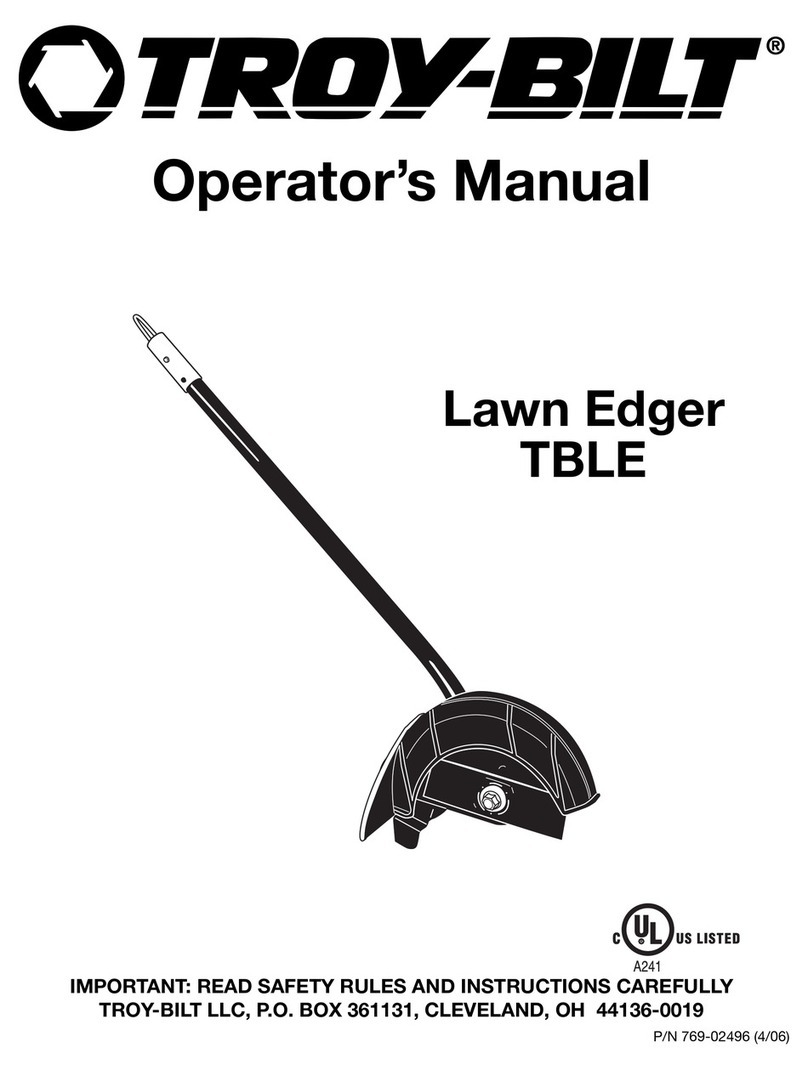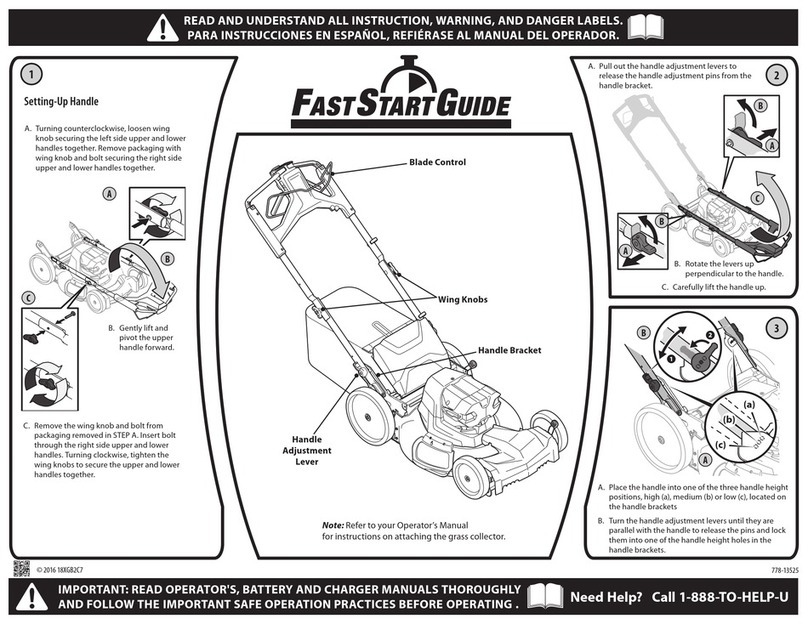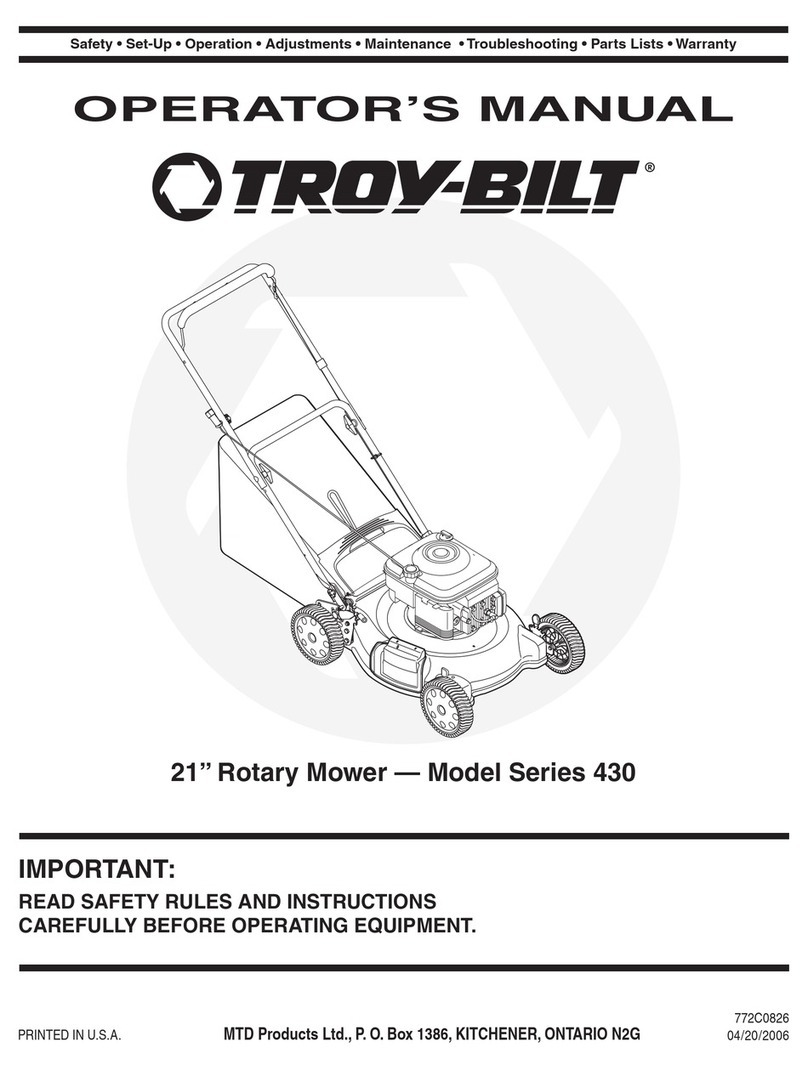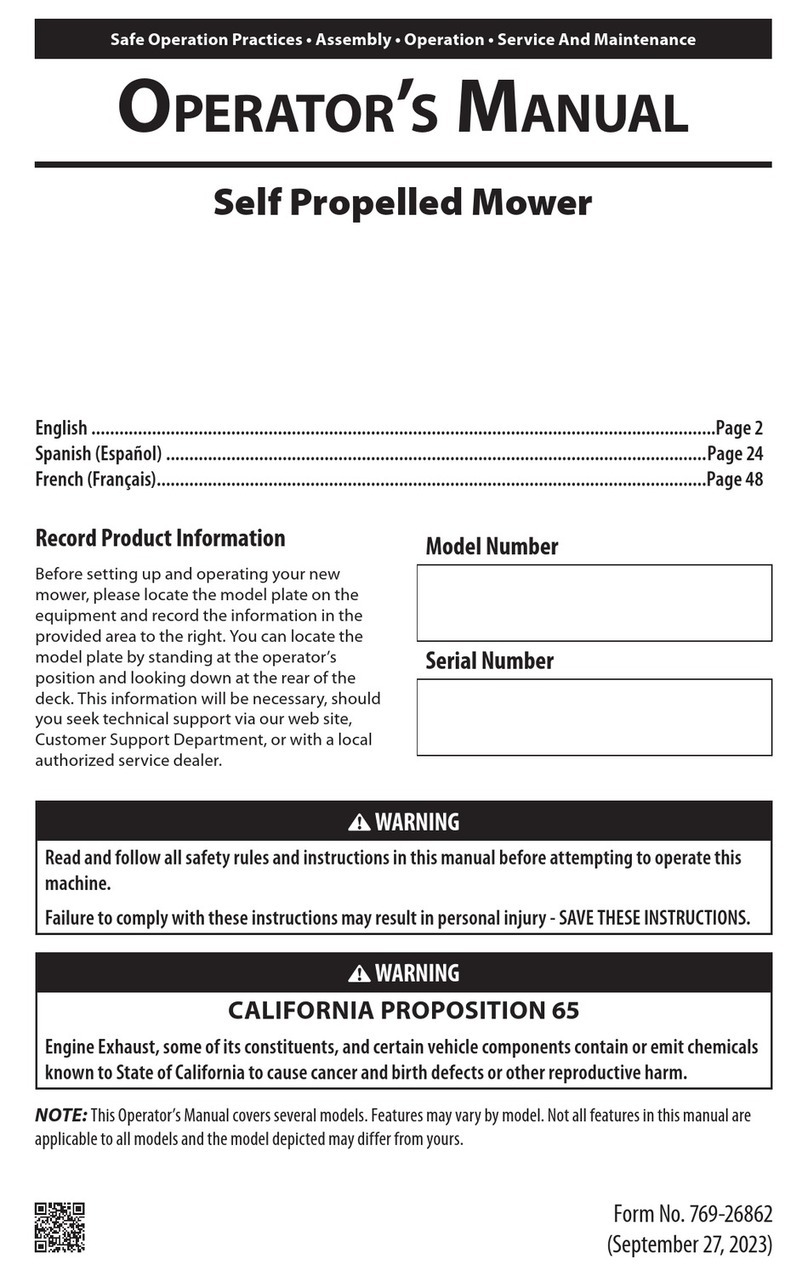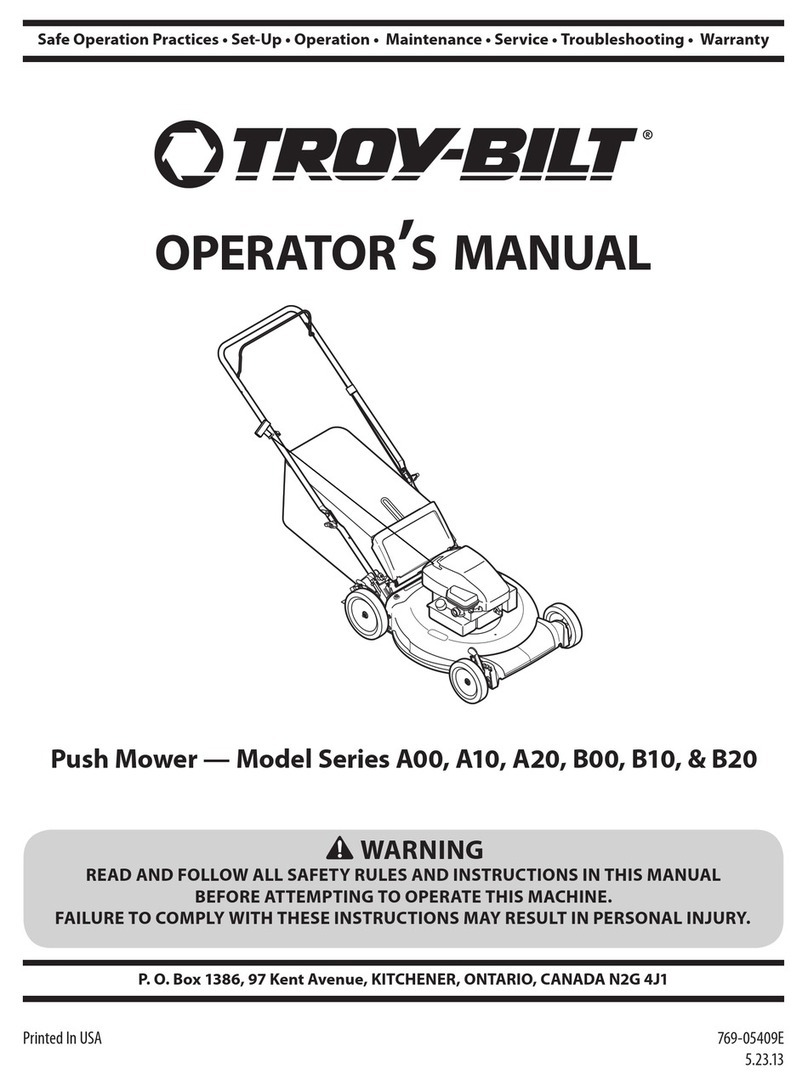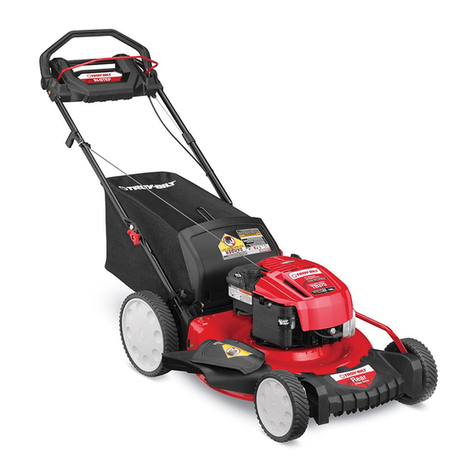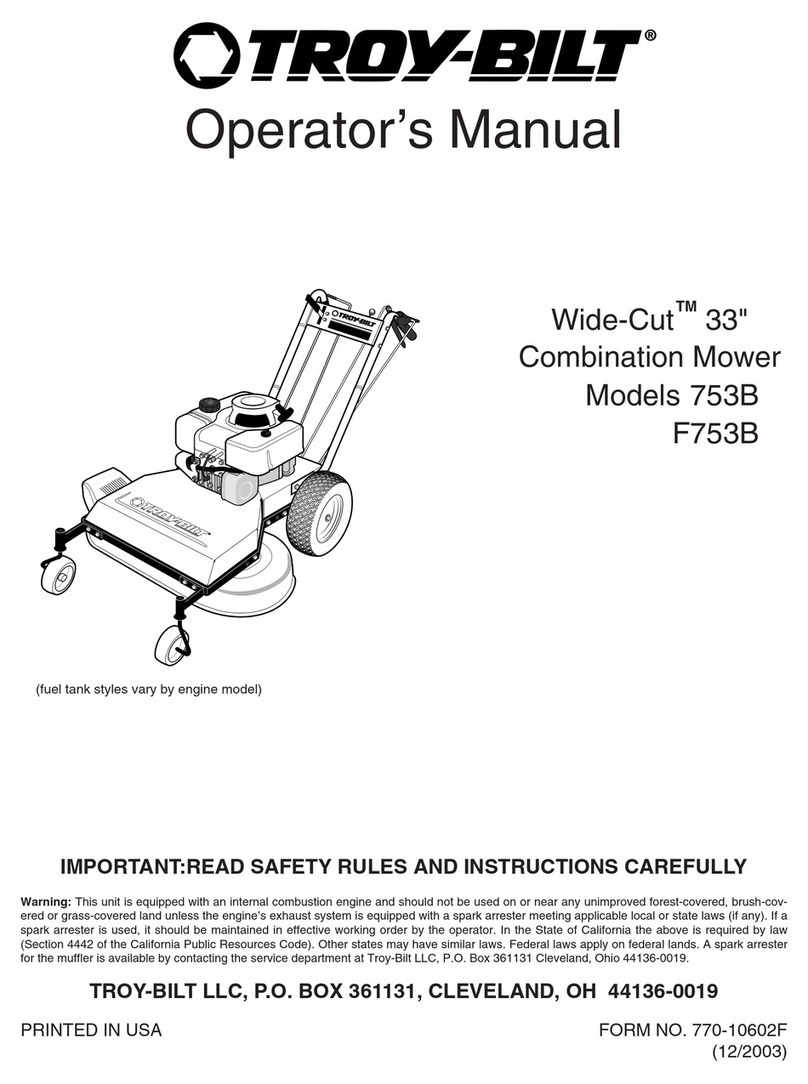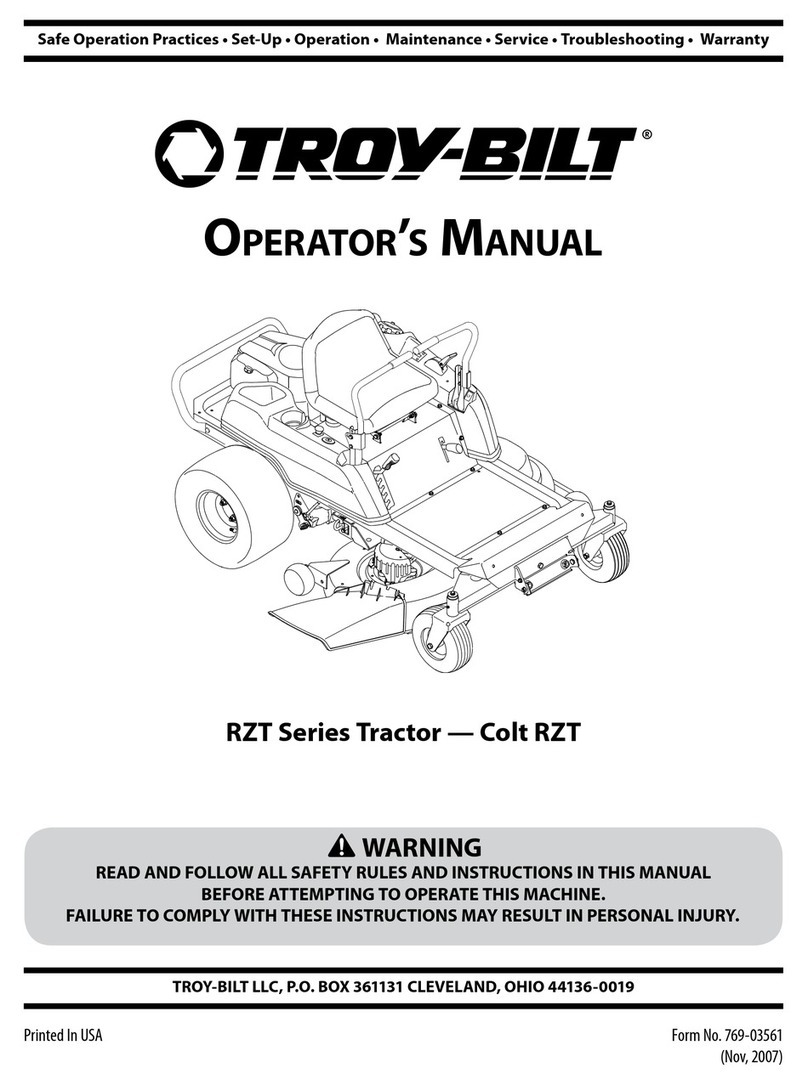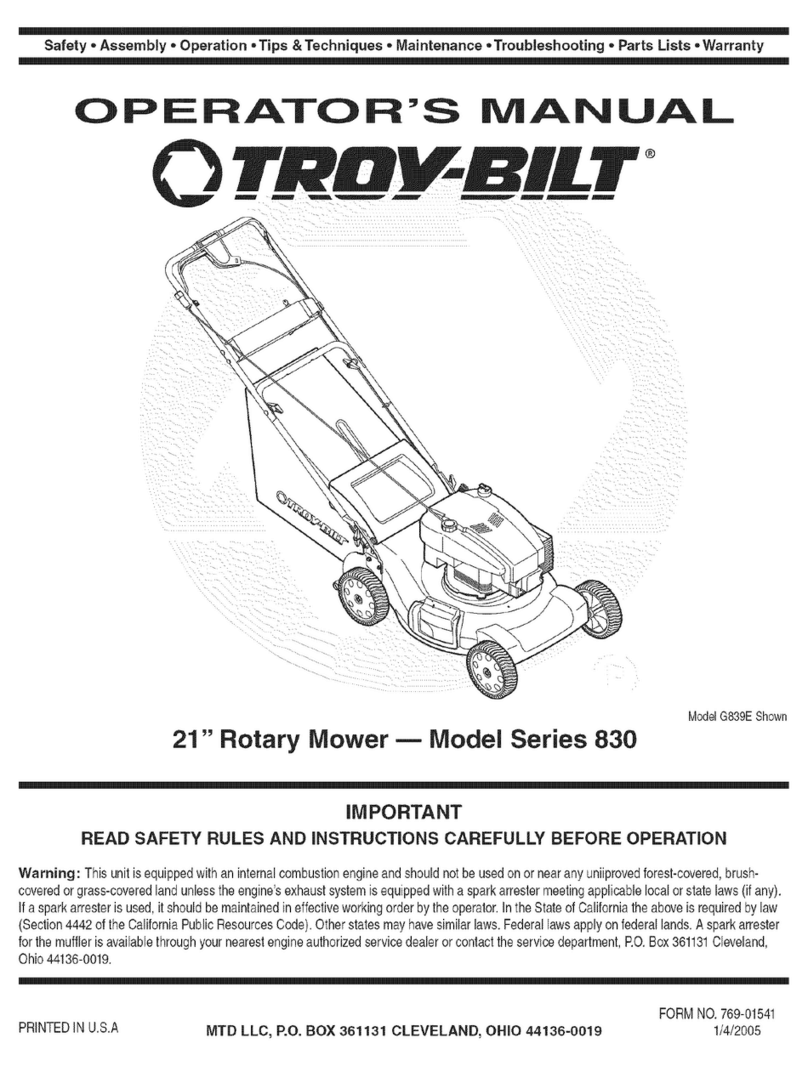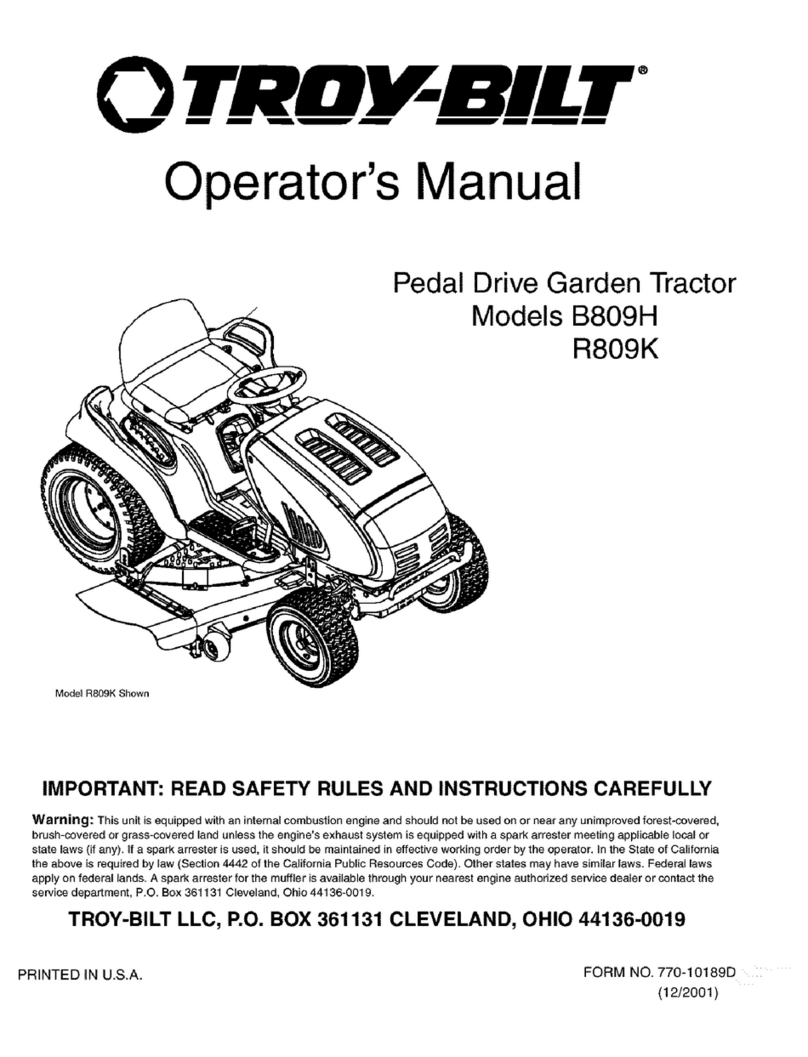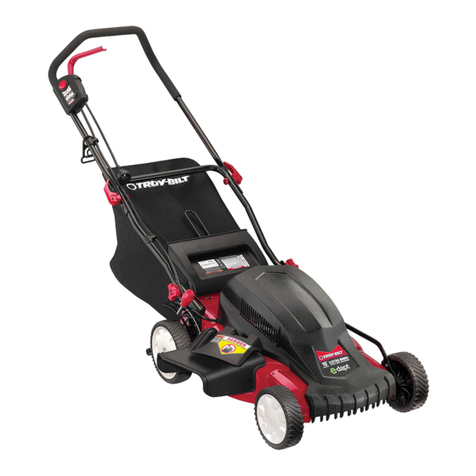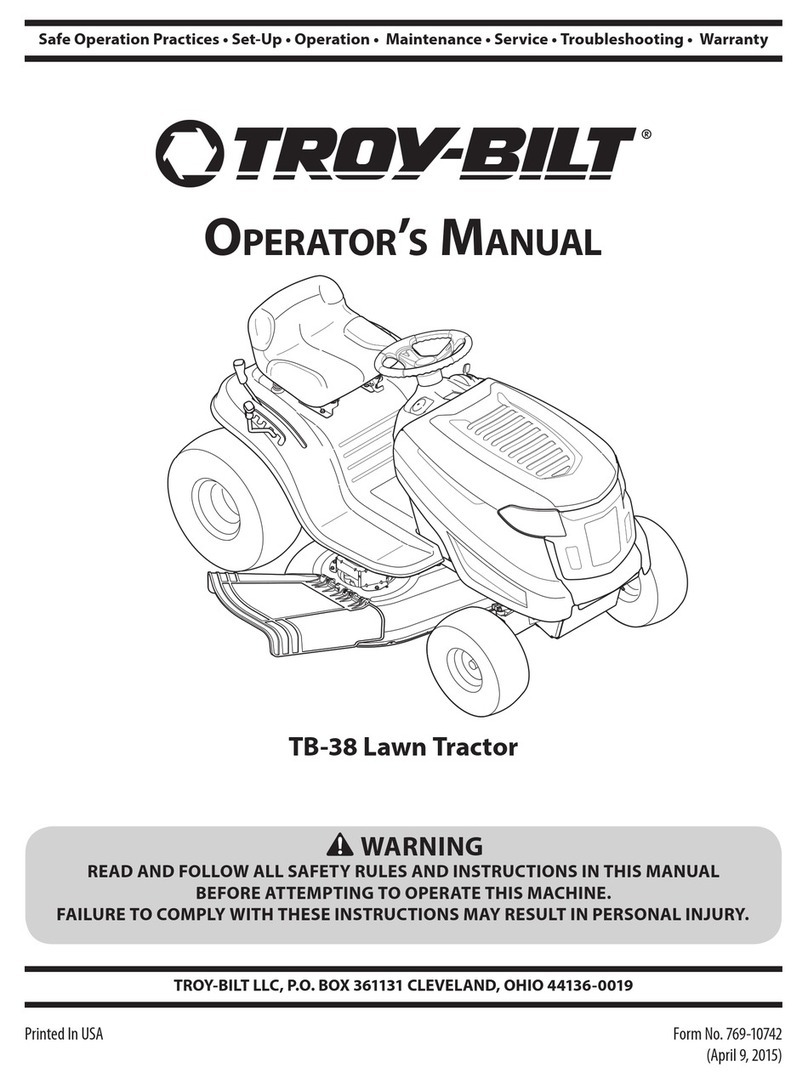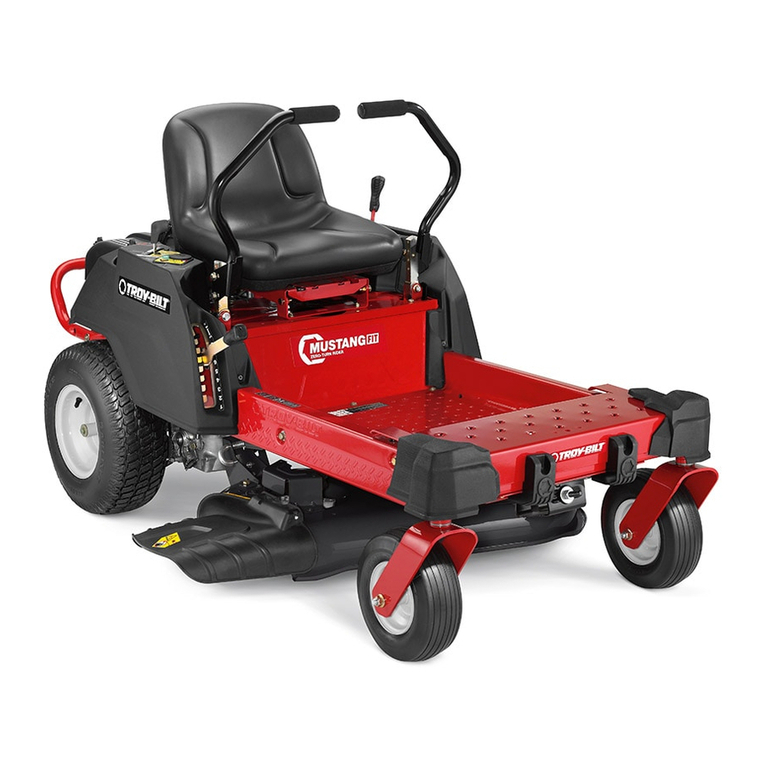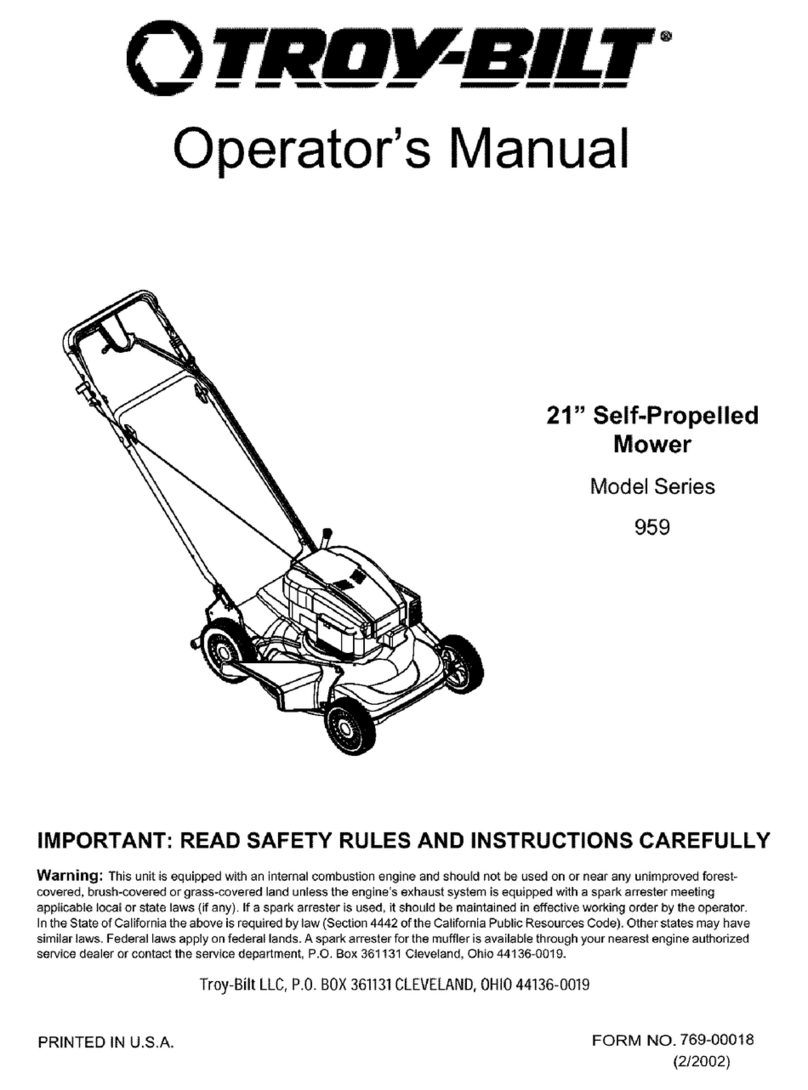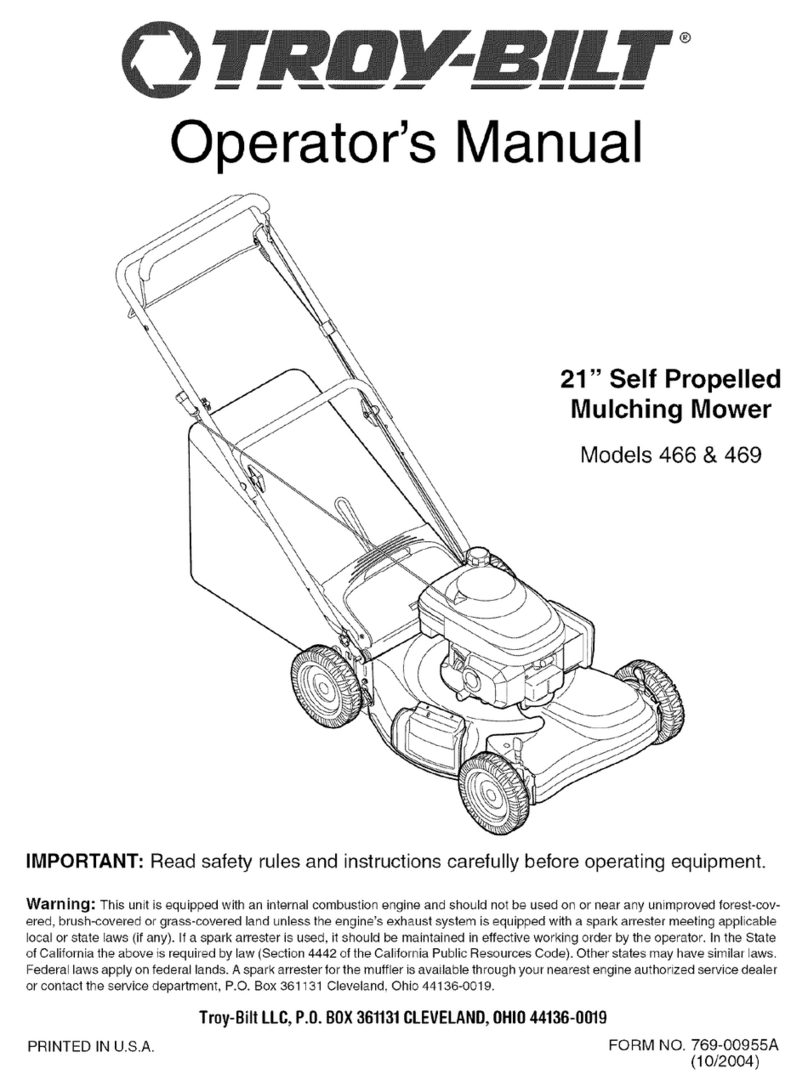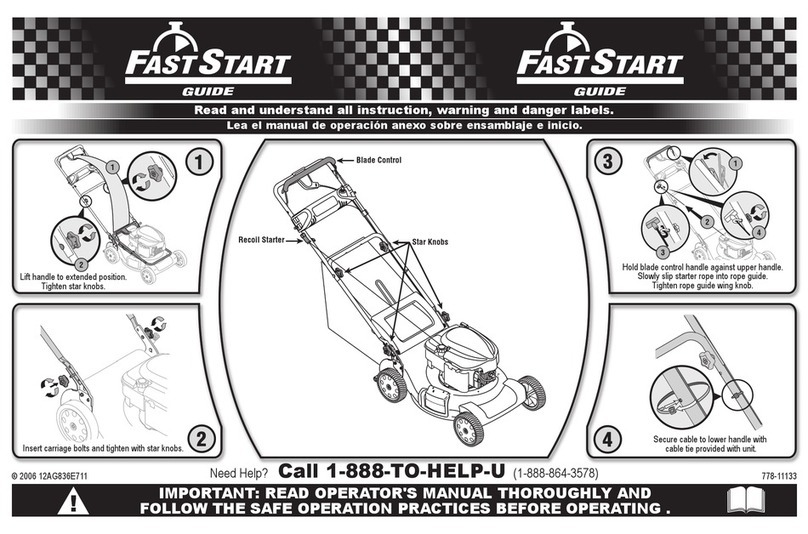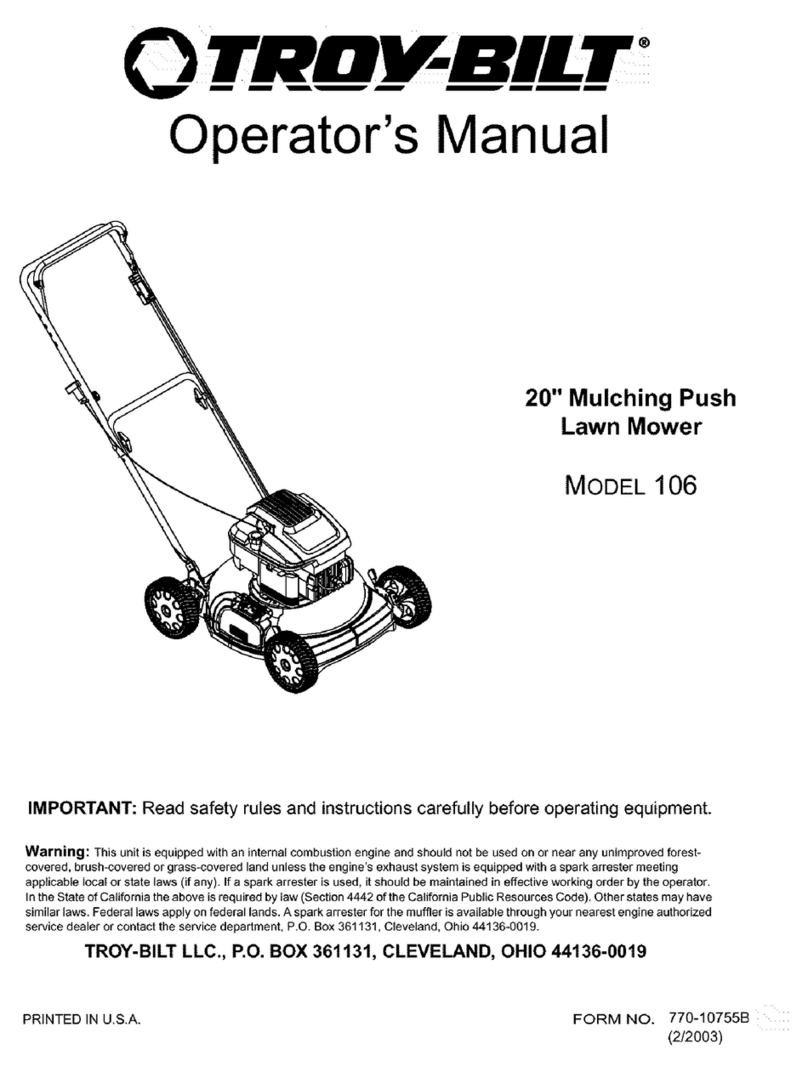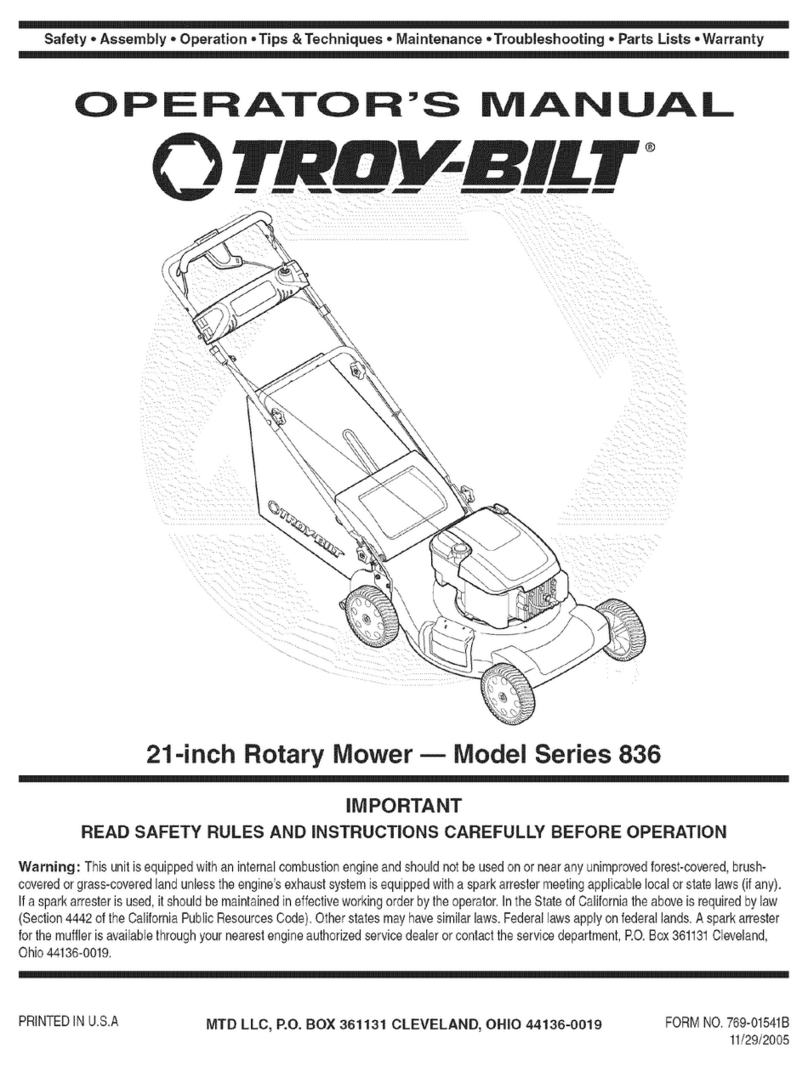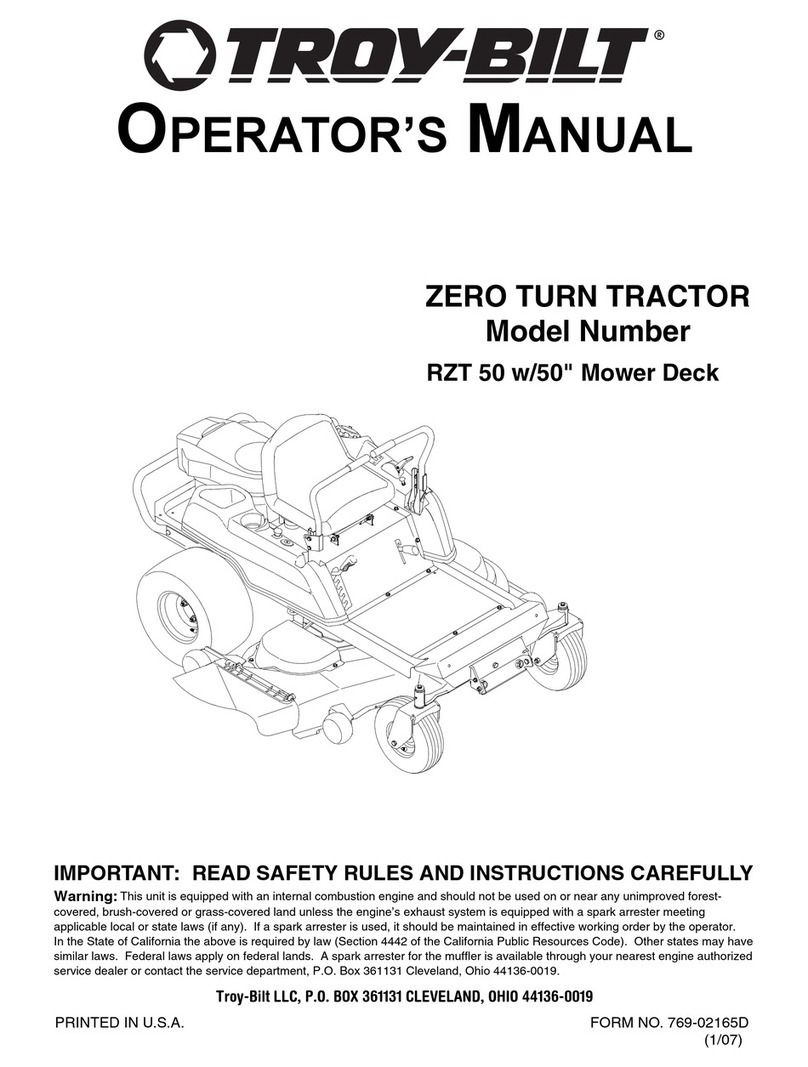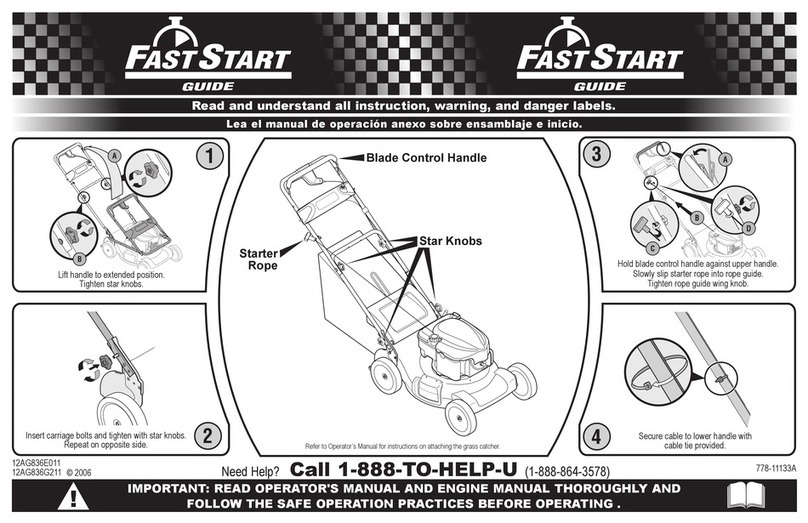tive and may result in personal injury
through contact with the rotating blade. The
blade control handle must operate easily in
both directions and automatically return to
the disengaged position when released.
•Never operate the mower in wet grass. Al-
ways be sure of your footing. A slip and fall
can cause serious personal injury. If you feel
you are losing your footing, release the
blade control handle immediately and the
blade will stop rotating within three seconds.
•Mow only in daylight or in good artificial
light. Walk, never run.
•Stop the blade when crossing gravel drives,
walks or roads.
•If the equipment should start to vibrate ab-
normally, stop the engine and check
immediately for the cause. Vibration is gen-
erally a warning of trouble.
•Shut the engine off and wait until the blade
comes to a complete stop before removing
the grass catcher or unclogging the chute.
The cutting blade continues to rotate for a
few seconds after the engine is shut off.
Never place any part of the body in the
blade area until you are sure the blade has
stopped rotating.
•Never operate mower without proper trail
shield, discharge cover, grass catcher, blade
control handle or other safety protective de-
vices in place and working. Never operate
mower with damaged safety devices. Failure
to do so, can result in personal injury.
•Muffler and engine become hot and can
cause a burn. Do not touch.
•Only use parts and accessories made for
this machine by the manufacturer. Failure to
do so, can result in personal injury.
•If situations occur which are not covered in
this manual, use care and good judgment.
Contact your customer support department.
SLOPE OPERATION
Slopes are a major factor related to slip and
fall accidents which can result in severe in-
jury. Operation on slopes requires extra
caution. If you feel uneasy on a slope, do
not mow it. For your safety, use the slope
gauge included as part of this manual to
measure slopes before operating this unit on
a sloped or hilly area. If the slope is greater
than 15 degrees, do not mow it.
DO:
•Mow across the face of slopes; never up
and down. Exercise extreme caution when
changing direction on slopes. Watch for
holes, ruts, bumps, rocks, or other hidden
objects which can cause you to slip or trip.
Tall grass can hide obstacles. Always be
sure of your footing. A slip and fall can
cause serious personal injury. If you feel you
are losing your balance, release the blade
control handle immediately, and the blade
will stop rotating within 3 seconds.
DO NOT:
•Do not mow near drop-offs, ditches or em-
bankments, you could lose your footing or
balance.
•Do not mow slopes greater than 15 degrees
as shown on the slope gauge.
•Do not mow on wet grass. Unstable footing
could cause slipping.
CHILDREN
•Tragic accidents can occur if the operator is
not alert to the presence of children. Children
are often attracted to the mower and the
mowing activity. They do not understand the
dangers. Never assume that children will re-
main where you last saw them.
a) Keep children out of the mowing area
and under the watchful care of a respon-
sible adult other than the operator.
b) Be alert and turn mower off if a child en-
ters the area.
c) Before and while moving backwards, look
behind and down for small children.
d) Use extreme care when approaching
blind corners, doorways, shrubs, trees, or
other objects that may obscure your vi-
sion of a child who may run into the
mower.
e) Keep children away from hot or running
engines. They can suffer burns from a hot
muffler.
•Never allow children under 14 years old to
operate a power mower. Children 14 years
old and over should read and understand
the operation instructions and safety rules in
this manual and should be trained and su-
pervised by a parent.
SERVICE SAFE HANDLING OF GASOLINE:
•To avoid personal injury or property damage
use extreme care in handling gasoline. Gas-
oline is extremely flammable and the vapors
are explosive. Serious personal injury can
occur when gasoline is spilled on yourself or
4
